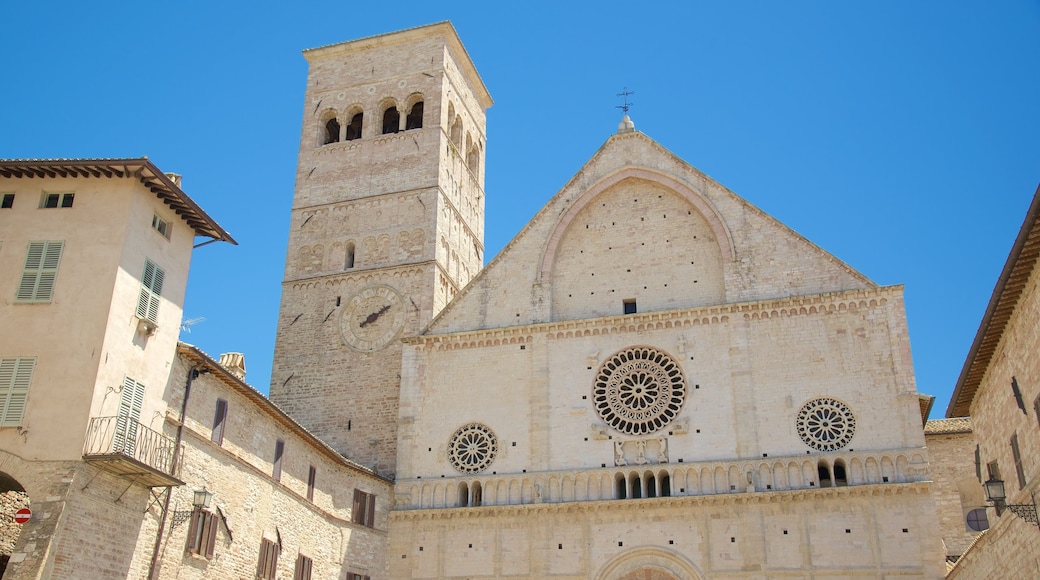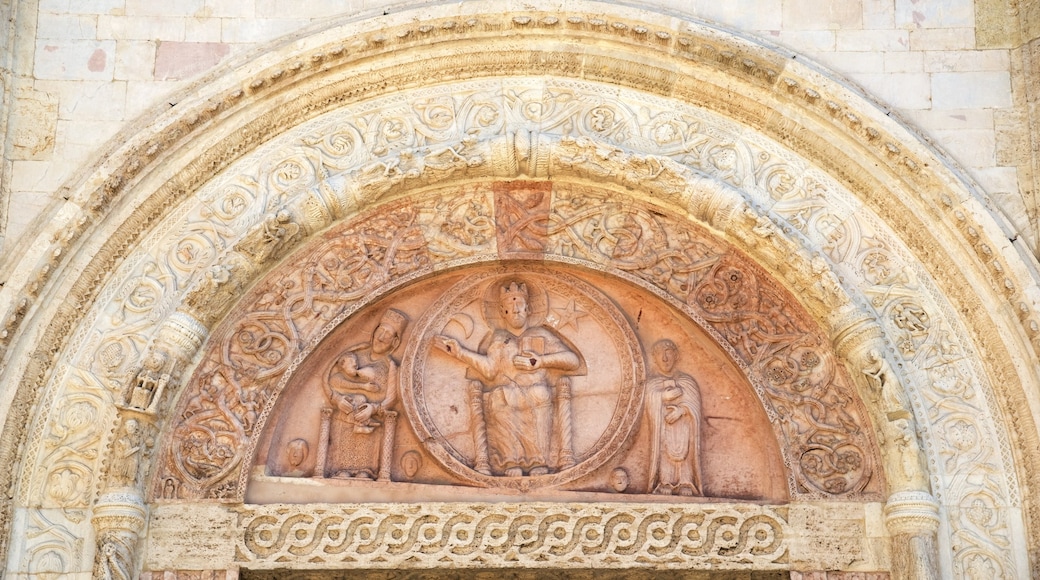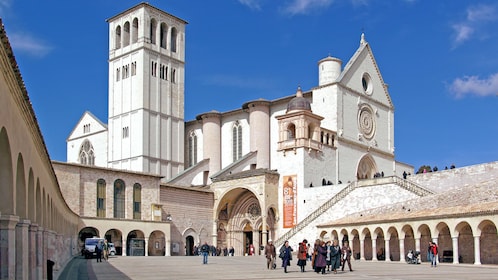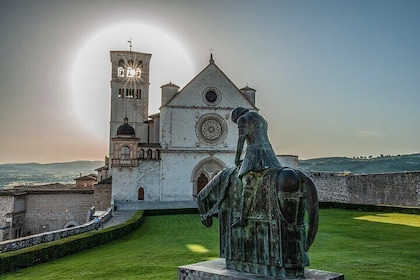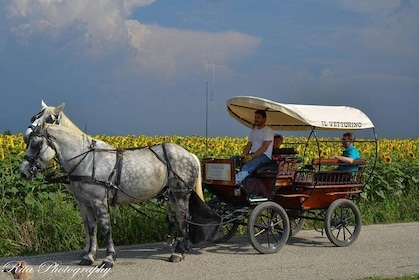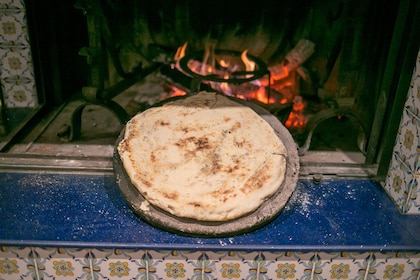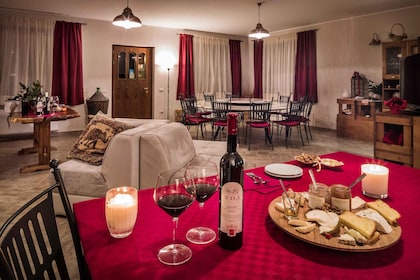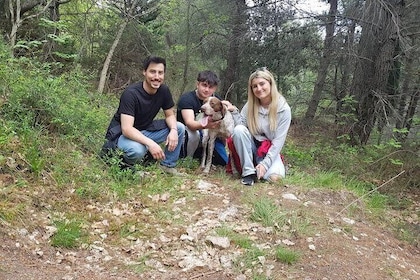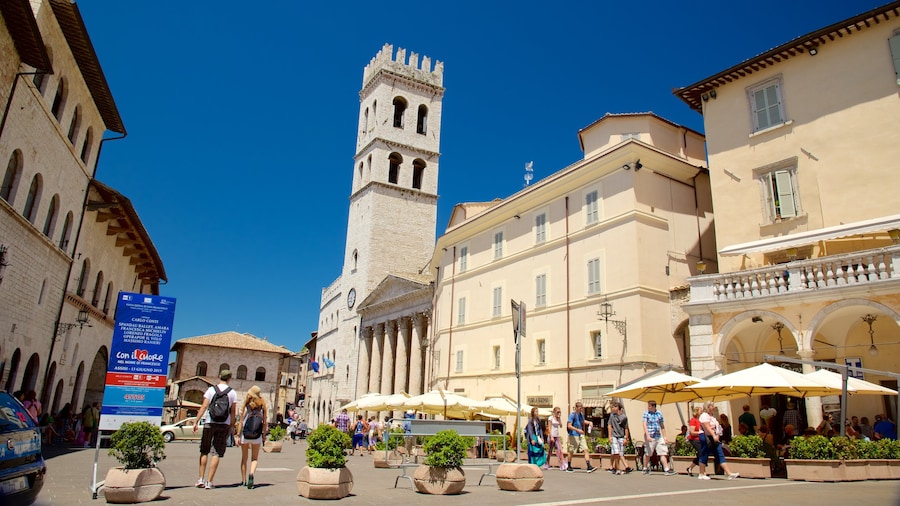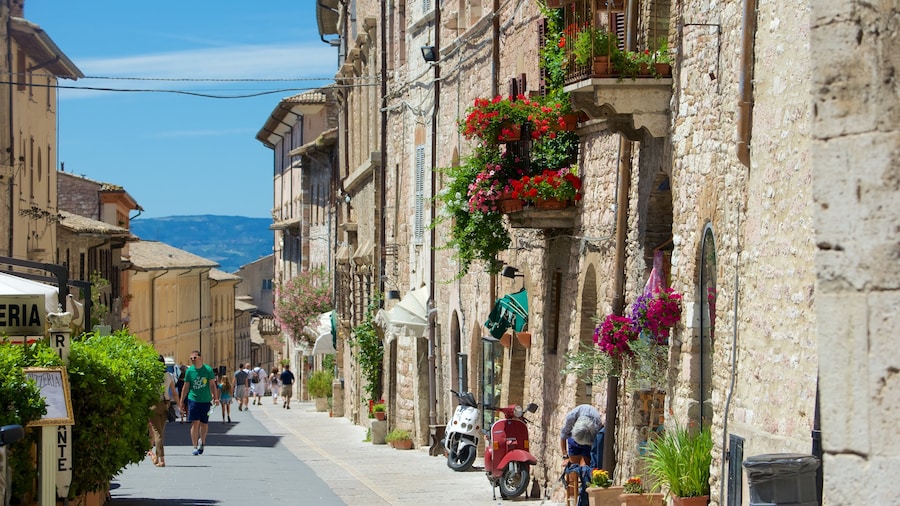Although less famed than some of the other religious buildings in Assisi, the Cathedral of San Rufino is a site of enormous historic, spiritual and architectural significance. Dedicated to Assisi’s patron saint, Rufinus of Assisi, who converted the town to Christianity in the 3rd century, the Cathedral of San Rufino stands on the ruins of two other religious buildings. Explore the cathedral’s interior, the surrounding piazza and the subterranean crypt to see a diverse array of architectural styles and learn about the importance of the site in the history of the Franciscan Order.
Admire the western façade, which is constructed in an elegant Romanesque style, embellished with decorative friezes, reliefs of lions and griffins guarding the doors. Look for the decorative wheel-shaped rose windows towering over the cathedral’s entrances. From this viewpoint you can also see the bell tower to the left of the cathedral, which predates the cathedral by over a century, showing development in architectural styles and construction techniques.
Move slowly through the central nave of the cathedral, taking in the ornately decorated altars and massive pillars that support the dome overhead. Look down through the transparent glass panels below your feet to see the old church ruins on which the present cathedral was built.
Make your way to the ancient baptismal font beside the entrance at the right-hand nave. It was at this site that St. Francis, the patron saint of Italy, and many of his original disciples, including St. Clare, were baptized.
Go to the church museum to see a range of detached frescoes from the 12th and 13th centuries, various paintings and a small architectural collection. From here you can enter the crypt, which houses the remains of a church built on this site in the 11th century alongside a 3rd-century Roman sarcophagus holding Rufinus’ relics.
The Cathedral of San Rufino is open daily, though times vary according to the season and it is often closed during lunch hours. Admission to the main cathedral is free but there is a fee to enter the cathedral museum and crypt.
